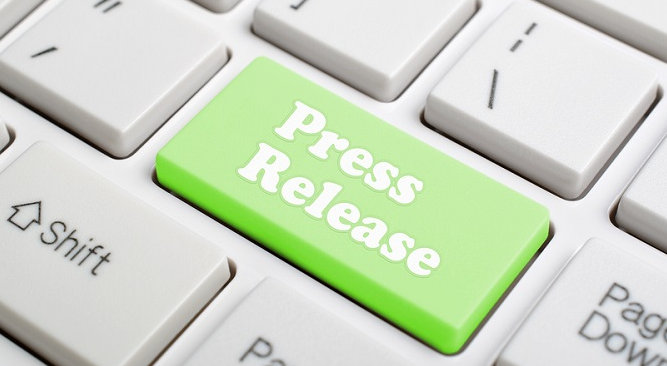Write a Press Release that Gets Attention and POPs
Even though I’ve shared press releases I’ve written with my coaching clients, I still get asked … as in repeatedly … How do I write a press release? So, I’ve decided to do a one more time and put it in my BLOG. The reality is: just start doing press releases. Be consistent. It can be your form of a “breaking news,” an announcement of a book award, a new book, an event you are speaking at, an event you are hosting, announcements or reveals of “something” … something that connects you and/or your book to the press release.
Before You Start …
- Do a draft first. No exceptions.
- Create a bullet-point outline. Get all the essential information—the Who, What, WHY, and Where on paper so you know what you want to say. Press releases can run two pages … remember, the shorter the better still rules.
- Read your press release out loud multiple times before you hit the “send” button. In the draft, so you can hear redundancies, phrases that don’t work, and mediocre writing. In the opening paragraph, read and listen for the Who, What, Why—are they included? In the next, are the When and Where included?
- Font. Use Times New Roman, Arial, or Tahoma. Make it easy to read. Headlines 12 or 14 points, body 11 points. Keep it simple or professional.
- Optimize your lead paragraph. Include several keywords or keyword phrases—the search engines are hungry. If your press release is picked up and broadcasted or pulled from, it can build your online influence.
- Add your name, book title, company name to Google Alerts and TalkWalker.com. This creates an online clipping service
Your Format …
- In the Upper Left or Right of Every Release … In Bold: For Immediate Release; include a contact name, email, and phone number. You can also repeat your contact information in the Boilerplate.
- Your Headline … Can be a single line or triple-header. It can be a main that is bolded with a subhead—something that adds more information.Headlines can be a question, a statement of fact, an innovative or provocative declaration. They can be a summary of the content, ironic, amusing, intriguing, motivating or empowering. No misspellings. No grammar errors. No trivial dribble. This is the get to the point push.
- Insert Image … Either before the Headline or after if you have. It could be your logo, book cover, award … whatever connects with the subject of the release.
- Infront of Your “Lead” Paragraph … insert City, State, Date. City is capitalized, state abbreviated. Use the AP Style. For example: DENVER, Colo. June 3, 2022 (or it could be June 2022). Then begin your lead paragraph.
- Your Lead …
The lead is the “heartbeat” of your release. You only have a few seconds a minute to catch an editor’s interest If your lead and headline don’t create the hook, your release will generate the “delete” button. Use keywords to feed the search engines.
Your lead must be relevant to what the receiver’s readership/viewership/listenership needs or wants to know. Always use action verbs, not passive verbs. Your opening graph should be no more than four to seven lines of copy.
Keep it simple: a statement of the news; or a compelling—a question, a bold surprising statement or fact, something contrarian to popular belief, a story that pulls the heartstrings, a line that points out the need of what you offer. Whatever it is, the purpose is to reel in the reader. Your opening line should not be: Such and such event will take place on this day… That comes after your captivating lead.
- The Structure …
Weave the “who, what, where, when, and why” throughout the release as long as the most critical items are at the top—such as the date of an event that’s upcoming. Your release should have a logical flow to it.
- Grammar and Punctuation …
Grill into your writing and head … I must do this correctly. This is not a text message. Don’t abbreviate (with the exception of the opening State and Month in the Lead paragraph. Only capitalize REAL words that require capital. A common mistake is to refer to a company or organization as a person in writing. Don’t. For all press releases, companies and organizations are an IT.
- When and How to Quote …
Use the third and fourth paragraphs as good places to add a quote. It breaks up your narrative and reinforces your content.
- Your Final Paragraph …
Sum it up—about whatever you are writing. Short and succinct. Do include your website for additional information. - The End of Your Release …
Add three ### at the end of a press release—center them directly above the boilerplate or underneath the body copy. It’s the tell to the reader that there is no further copy to come. The editor or reporter will know they have the full document in hand, with the exception of the closing boilerplate. - Create Your Boilerplate…
This is YOUR WHO and what is known as a boilerplate and is included after all the essential information has been given. It gives journalists and readers a brief overview of your organization. It’s about who you are, what you do, where you’re located, and who you serve. Include one sentence on anything else that your audience and the media benefit from knowing.. Restate your name or who to connect with: Name, phone, email, and website. This would be the place to include your social media handles, if you choose.
- Press Release Length … Old rule: press release should only be one page in length. New rule: include all relevant information—two pages are fine. Your press release should be as long as it takes to provide the appropriate information, but don’t ramble Restrict it to what’s really necessary for a reporter to his or her job effectively. Hint: do a MAIN release, then create several minis—always with the key elements of the WHO, WHAT, WHY, WHEN, and WHERE, then other elements. Quotes from you others; more about the item you are shouting out about, etcetera. Release these a few days later, as if you would do a funnel marketing campaign.
- Spacing … Old rule: double space everything. New rule: Single and one and a half lines are fine. Paragraphs should be less than eight lines; better yet, less than five (that’s lines, not sentences). Think easy reading.
Start writing! May your press releases forward force be with you!


Dr. Judith Briles is a book publishing expert and coach. Often, she must roll up her writing sleeves and become a Book Doctor, juicing up storylines and author words. She empowers authors and works directly with authors who want to be seriously successful and has been writing about and conducting workshops on publishing since the ’80s. Judith is the author of 37 books including Author YOU: Creating and Building Your Author and Book Platforms, Snappy Sassy Salty: Wise Words for Authors and Writers, and How to Create a $1,000,000 Speech. Her personal memoir When God Says NO-Revealing the YES When Adversity and Loss Are Present is a #1 bestseller on Amazon. Collectively, her books have earned over 45 book awards. Judith speaks throughout the year at publishing conferences.
Throughout the year, she holds Judith Briles Book Unplugged in-person and online experiences: Publishing, Speaking, Marketing, and Social Media. All are two-day intensives limited to a small group of authors who want to be seriously successful. Join Judith live for the “AuthorU-Your Guide to Book Publishing” podcast on the Toginet Radio Network HERE.
Follow @AuthorUYOUBooks and @MyBookShepherd on Twitter and do a “Like” at AuthorYOU, and join the Facebook group Book Publishing with The Book Shepherd. If you want to create a book that has no regrets, contact her.
©2022 Judith Briles – The Book Shepherd™ All Rights Reserved.

